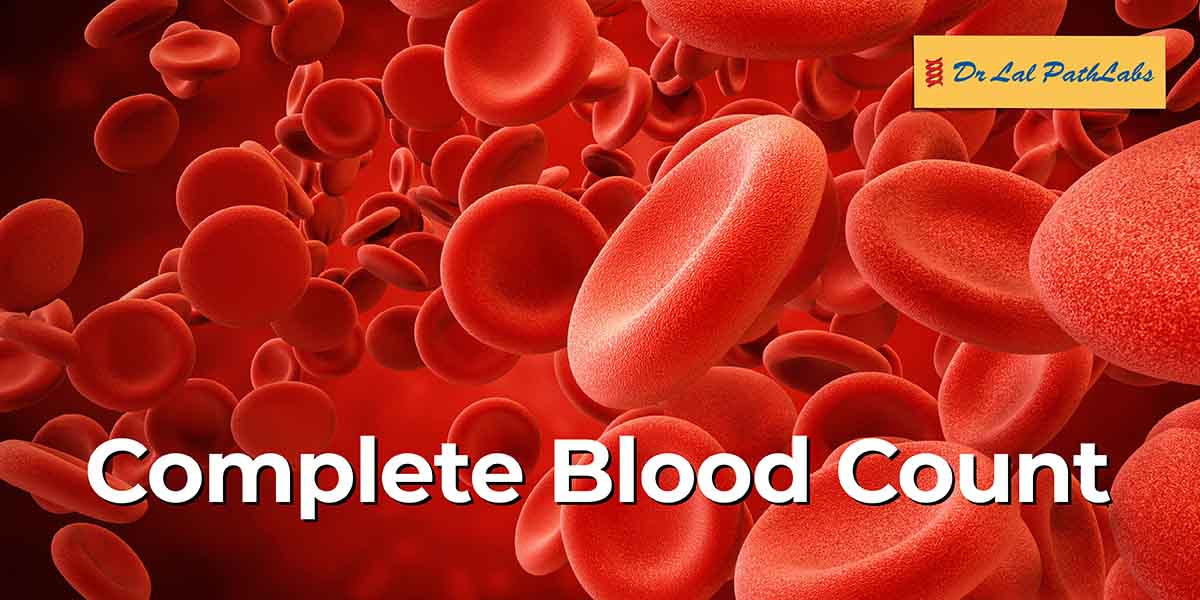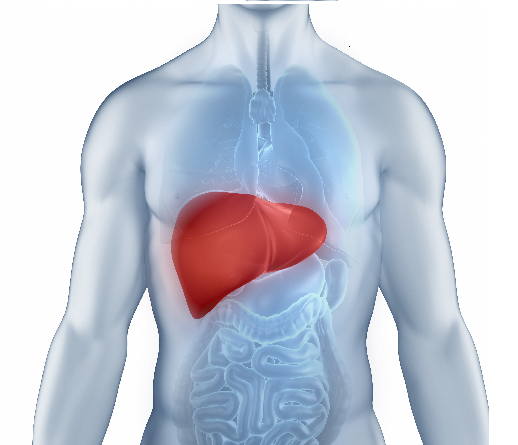Complete Blood Count (CBC) Test: Procedure & Results
Overview
The most commonly ordered test is Complete blood count (CBC) and is used to:
- Evaluate overall health
- Screen for anaemia, infection, inflammation, bleeding problems, and blood cancer, among other things.
- Examine the function of the bone marrow and spleen.
- Monitor an existing condition, e.g., blood disorders
- Monitor treatment that may affect blood cells, such as chemotherapy or radiation therapy.

What does the CBC test measure?
The Complete blood count (CBC) test can help detect hundreds of conditions, disorders, and infections using a small amount of blood. It measures multiple blood components, including:
- White Blood Cells count: The total number of white blood cells in a blood sample.
- White Blood Cell Differential: There are five types of white blood cells called leukocytes. Neutrophils, lymphocytes, monocytes, eosinophils, and basophils are among them. This test measures how many of each type the blood has. The numbers of each type may temporarily shift higher or lower in cases such as
- An infection can stimulate the body to produce more neutrophils to fight the bacterial infection.
- There may be an increase in the amount of eosinophils in the case of allergies.
- A viral infection may cause an increase in the number of lymphocytes.
- Red blood cell (RBC) count: The number of red blood cells, also called erythrocytes, in a blood sample.
- Hemoglobin: The total amount of oxygen-carrying protein present in the blood.
- Hematocrit: The percentage of a person’s total blood volume that is made up of red blood cells.
- Red blood cell indices: Calculations that provide information on the physical properties of RBCs:
- Mean corpuscular volume (MCV)
- Mean corpuscular hemoglobin (MCH)
- Mean corpuscular hemoglobin concentration (MCHC)
- Red cell distribution width (RDW)
- Reticulocyte count
- Platelet count
- Mean Platelet Volume (MPV): It measures the average amount (volume) of platelets. The mean platelet volume can still be too high or too low if the platelet count is normal.
How is the CBC test performed?
A blood sample will be drawn from a vein in the arm by a healthcare expert.
Unless the doctor specifies, no special preparation is required before the test.
What are the risks of the CBC test?
The Complete blood count (CBC) test is a safe, standard test, and there are minimal risks involved, such as
- Bleeding
- Lightheadedness
- Infection
- Bruising
What the results may indicate?
A Complete blood count (CBC) is not a definitive diagnostic test. The doctor may recommend specialized tests to have a confirmed diagnosis.
Standard terms used to describe Complete blood count (CBC) results are:
- Anemia
- Leukopenia – a low number of White Blood Cells. It is caused by a medical illness, such as an autoimmune disorder that destroys white blood cells, bone marrow issues, or cancer. Certain medications might also reduce the count of white blood cells.
- Leukocytosis – an increased number of White Blood Cells. It may be due to an infection, inflammation, or medication reaction.
- Thrombocytopenia – a low number of platelets.
- Thrombocytosis – an increased number of platelets.
What does an abnormal CBC result indicate?
Abnormal RBC count
The causes for low RBC count may be due to the following:
- Anemia
- Lymphomas
- Cancers of the blood
- Bone marrow disorders
- Nutritional deficiency
- Chronic Kidney disease
- Chronic inflammatory disease
The causes for the high RBC count may be the following:
- Dehydration, such as from severe diarrhea
- Kidney tumours
- Lung diseases
- Smoking
- Polycythemia vera
Abnormal Hemoglobin and Hematocrit
It usually mirrors RBC results and provides added information
Abnormal MCV
Low MCV may indicate that RBCs are smaller than usual.
High MCV may indicate that RBCs are larger than usual. It can occur in cases such as anemia due to vitamin B12 or folate deficiency, liver disease, and hypothyroidism.
Abnormal MCH
It usually mirrors MCV results.
Abnormal MCHC
Low MCHC may indicate diseases like iron deficiency anemia and thalassemia.
High MCHC may indicate diseases in which haemoglobin is more concentrated inside red blood cells, such as autoimmune hemolytic anaemia.
Abnormal RDW
Low RDW may indicate uniformity in the size of Red blood cells.
High RDW may indicate a significant difference in RBC size in conditions such as iron deficiency anaemia or pernicious anaemia, causing an increase in RDW.
Abnormal Reticulocyte Count
Low Reticulocyte count may indicate a condition affecting the production of red blood cells, such as a bone marrow disorder or a nutritional deficiency.
High Reticulocyte count may indicate peripheral causes, such as bleeding or hemolysis
Abnormal WBC count
The causes for low WBC count may be due to the following:
- Viral infection
- Severe bacterial infection
- Bone marrow disorders
- Autoimmune conditions
- Lymphoma
- Dietary deficiencies
The causes for high WBC count may be due to the following:
- Infection
- Leukemia
- Inflammation
- Stress, allergies, asthma
Abnormal Neutrophil count
A low neutrophil count, known as neutropenia, may be due to the following:
- Severe infection
- Immunodeficiency
- Autoimmune disorders
- Dietary deficiencies
- Reaction to drugs
- Bone marrow damage
A high neutrophil count, known as neutrophilia, may be due to the following:
- Acute bacterial infections
- Inflammation
- Stress, Trauma
- Certain leukemias
Abnormal Lymphocyte count
A low lymphocyte count, known as lymphocytopenia, may be due to the following:
- Autoimmune disorders
- Infections
- Bone marrow damage
- Corticosteroids
A high lymphocyte count, known as lymphocytosis, may be due to the following:
- Acute viral infections
- Certain bacterial infections
- Chronic inflammatory disorder
- Lymphocytic leukemia, lymphoma
- Acute stress
Abnormal Monocyte count
Repeated low monocyte counts may be due to the following:
- Bone marrow damage or failure
- Hairy cell leukemia
- Aplastic anemia
A high monocyte count may be due to the following:
- Chronic infections
- Infection within the heart
- Collagen vascular diseases
- Monocytic or myelomonocytic leukemia
Abnormal Eosinophil count
Occasional low numbers are usually not medically significant.
The causes for high eosinophil count may be due to the following:
- Asthma, allergies such as hay fever
- Drug reactions
- Parasitic infections
- Inflammatory disorders
- Some cancers, leukemias, or lymphomas
Abnormal Basophil count
Occasional low numbers are usually not medically significant.
A high basophil count may be due to the following:
- Rare allergic reactions
- Inflammation
- Some leukemias
- Uremia
Abnormal Platelet count
The causes for low platelet count may be due to the following:
- Cancer, such as leukemia or lymphoma
- Autoimmune diseases
- Bacterial infection
- Viral infections like dengue
- Chemotherapy or radiation therapy
- Certain drugs, such as nonsteroidal anti-inflammatory drugs (NSAIDs)
The causes for high platelet count may be due to the following:
- Bone marrow disorders
- Essential thrombocythemia
- Anemia
- Infection
- Surgical removal of the spleen
- Polycythemia vera
- Some types of leukemia
Abnormal MPV
Low MPV may indicate a condition that affects red blood cell production, such as a bone marrow abnormality or a nutritional deficiency.
High MPV may indicate a high number of larger and younger platelets in the blood. It may be due to the bone marrow producing and releasing platelets rapidly and prematurely into circulation.
Summary
Doctors use the CBC test to manage the disease and help you stay healthy. The CBC test can help screen for hundreds of disorders, conditions, and infections with one blood sample. The results of the CBC test can detect diseases early, sometimes before you have symptoms, so that treatment can start as soon as possible.
Disclaimer:
This blog is for informational purposes only and should not be construed as advice or as a substitute for consulting a physician. It is not a substitute for medical advice or treatment from a healthcare professional.













